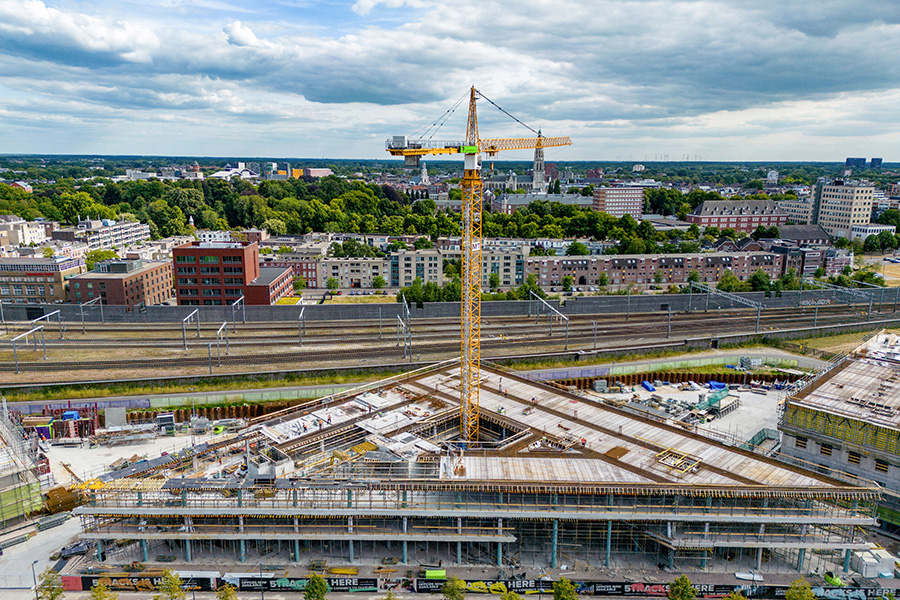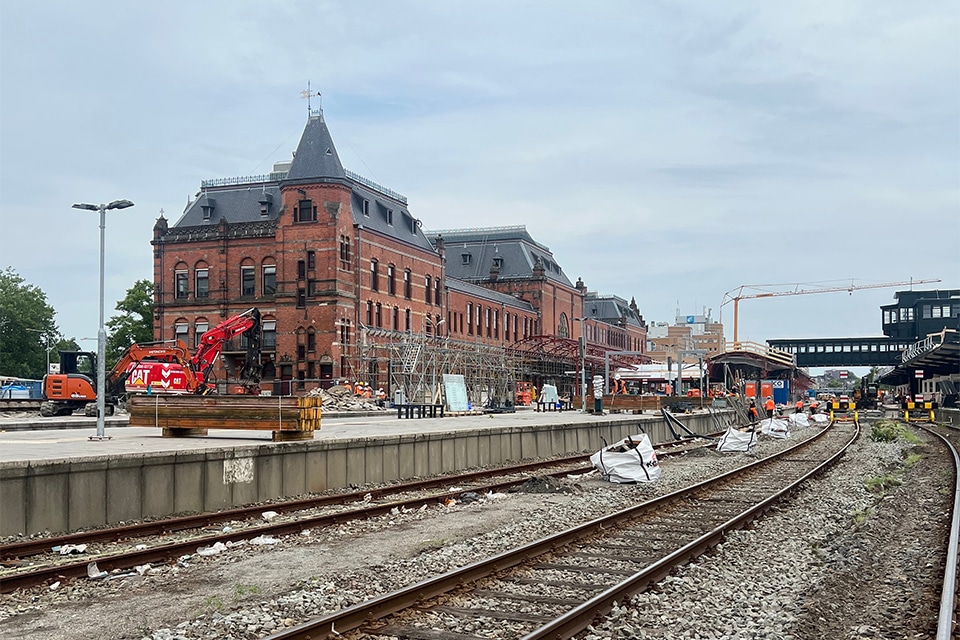
A puzzle of permits, history, technology and social concerns
Building at Groningen Main Station
Main Station Groningen is taking more and more shape. Although the station has been returned to service, work is still in progress on the finishing touches. For Antea Group it was and is a complex interplay of technology, permits, archaeology and social interests, right in the middle of an area with a rich history and monumental buildings.
Permits
Permit manager Mae Roumen sees daily how important it is to connect and optimally coordinate disciplines. “Permits are never easy, but in a project with as many interfaces as here at Groningen Station, the challenge is even greater. Because we at Antea Group have all the knowledge in-house - from archaeology to nature research - we can switch quickly and make integrated decisions. That's how we really make a difference here.”
Archaeology
The history of the area plays an important role in the project. As early as 2021, extensive archaeological desk research was conducted by Antea Group within the defined planning area. “Part of the work fell outside the defined planning area, and that is precisely where something special came to light during the excavation of the construction pit,” says Martha de Jong, Antea Group archaeologist. “Remains were found of the so-called Alva moat, a defensive work from the 16th century. The moat was later filled with all kinds of waste, from horse manure to textile remnants and utensils. That makes it very valuable archaeologically. In close consultation with the municipality and construction partners, the finds were secured in big bags so that construction could go ahead without losing the heritage.”
Technical challenges
Project manager Menno Brinkman of Antea Group emphasizes the scale and complexity of the implementation. “The project is very broad for us: from the design of the bicycle tunnel to the structural solutions for the bus underpass under the tracks. Here we are working intensively with parties such as Haskoning and the Strukton companies. We are also now working on a side project, a charging station for electric bus transport. But one of the final, greatest challenges is surely the completion of the last part of the bicycle tunnel, which runs under the monumental station building. We are literally building a concrete box under the floor of a building that was not constructed with modern technology. In doing so, we have to take into account installations, crawl spaces and especially the vulnerability of the monument.”
Time and social pressure
Besides engineering and archaeology, the time factor also played a major role, especially during the 64-day decommissioning period. “In a short time, tracks were removed, a construction pit dug, structures driven in and archaeological finds recovered at the same time. At such times it is not only technology that counts, but also the trade-off between social interests, safety and history,” says Roumen. “That only works if you act as one team.” Brinkman: “We are often involved in large projects, but this is really a mega-project. There is little in the Netherlands that compares to this.” The combination of archaeology, permits, historic preservation and modern infrastructure makes it a textbook example of how past and future literally come together in Groningen. “Nice that we as Antea Group can make an integral contribution to this with all our disciplines.”



